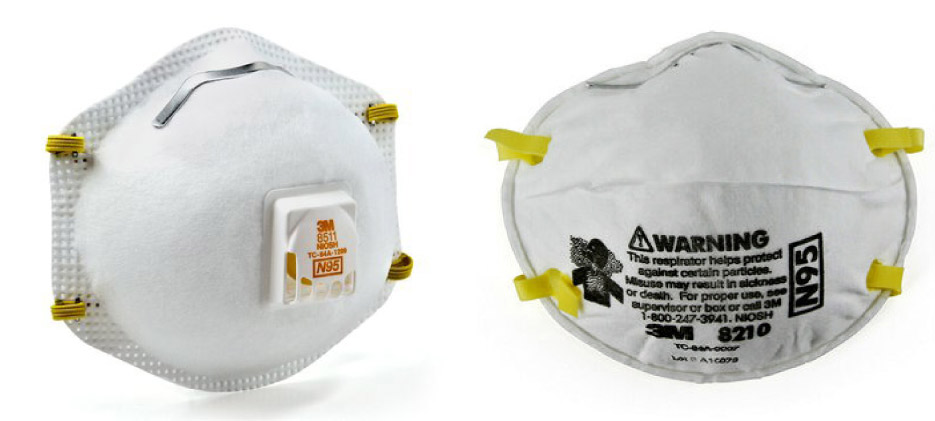How to Identify Fake N95 Masks
CDC.gov Safety Bulletin
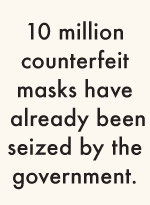 News recently surfaced that the federal and state governments are grappling with a massive counterfeiting ring that managed to distribute at least 10 million fake 3M N95 masks throughout at least five states—and those are just the ones that have been identified and seized by federal officials.
News recently surfaced that the federal and state governments are grappling with a massive counterfeiting ring that managed to distribute at least 10 million fake 3M N95 masks throughout at least five states—and those are just the ones that have been identified and seized by federal officials.
The initial reports involved distribution of fake masks in at least five states. In Washington State alone, it was discovered that a total of 300,000 masks the state had purchased for about $1.4 million were counterfeit. One hospital reported that the vendor had been examined and approved before purchase of the masks, which also passed physical and visual inspections.
The phony masks have been carefully designed to mimic the ones made and sold by 3M, including raised markings and printed labels. 3M also has issued a warning describing the model and lot numbers and other information to look out for when it comes to identifying the mask models that were counterfeited.
In addition, a guide to how masks can be spotted that are falsely claimed to be approved by the National Institute of Occupational Safety and Health (NIOSH) was recently distributed by NIOSH’s National Personal Protective Technology Laboratory (NPPTL).
NIOSH-approved respirators have an approval label on or within the packaging of the respirator (i.e., on the box itself and/or within the users’ instructions). Additionally, an abbreviated approval is on the filtering facepiece respirator (FFR) itself.
You can verify the approval number on the NIOSH Certified Equipment List (CEL) or the NIOSH Trusted-Source page to determine if the respirator has been approved by NIOSH. NIOSH-approved FFRs will always have one of the following designations: N95, N99, N100, R95, R99, R100, P95, P99, P100.
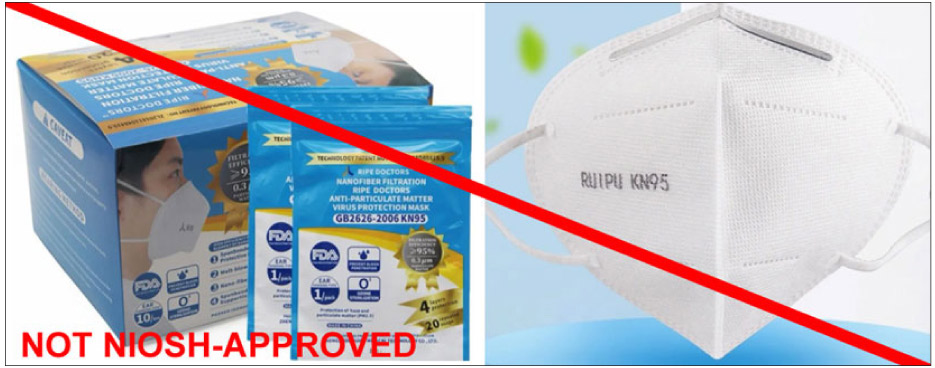 |
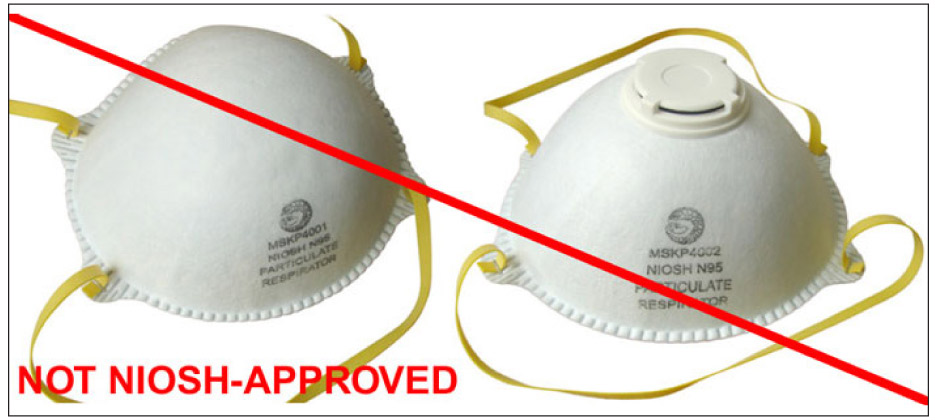 |
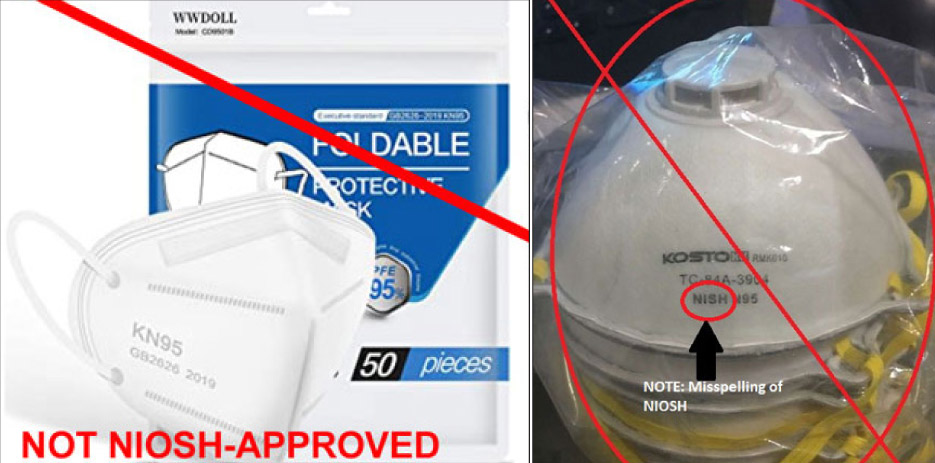 |
|
Above: Examples from the CDC.gov website cover several examples of foreign-made masks. Some may be advertised as meeting a “KN95” standard, substandard to the strict N95 NIOSH filtration standards. False claims of being NIOSH-approved are a separate but serious problem from the counterfeit 3M masks or approved masks. Above, right: Sample of a counterfeit mask – Note the misspelling of NIOSH. Below: Example of Exterior Markings on a NIOSH-approved Filtering Faceiece Respirator. |
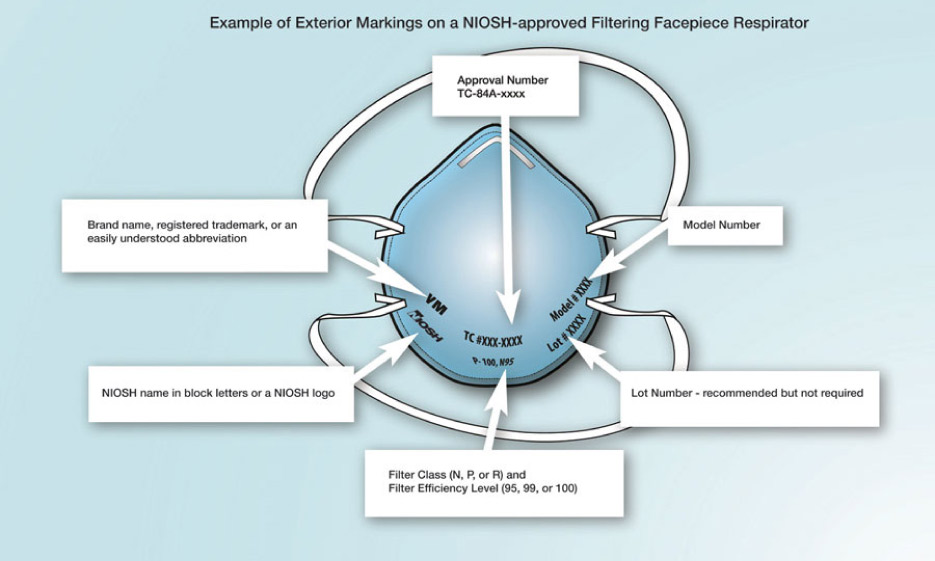 |
| Below: Samples of an authentic 3M N95 and 3M Model 8210 mask. |
|
|
The following are signs that a respirator may be counterfeit:
- No markings at all on the filtering facepiece respirator (FFR).
- No approval (TC) number on FFR or headband.
- No NIOSH markings.
- NIOSH spelled incorrectly.
- Presence of decorative fabric or other decorative add-ons (e.g., sequins).
- Claims of approval for children (NIOSH does not approve any type of respiratory protection for children).
- The FFR has ear loops instead of headbands.
Additional Tips
Make sure to check the respirator approval markings using the Example of Correct Exterior Markings on a NIOSH-Approved Filtering Facepiece Respirator graphic.
NIOSH also offers additional tips on how to spot counterfeit masks:
- When it comes to third-party marketplaces, if a listing claims to be “legitimate” and “genuine,” it likely is not. Take the time to examine transactions history and feedback, if possible.
- On auction sites or third-party distribution networks, most have a link to the seller of the item and their past sales. “This is where buyers have the option to leave feedback regarding the experience with the seller such as if the buyer received the item as advertised, if they received it in a reasonable amount of time, and if the buyer was unhappy with the product,” NIOSH notes. “Many reviewers will report if a product didn’t work or if it was cheap in construction.”
- Look for fluctuations of items traded over time (high or low periods of transaction). Is the seller marketing the same products over time, or are they primarily selling trendy items? Legitimate businesses and distributors typically sell what they know and stay consistent with their stock over time. A buyer should be able to discover this by looking into a businesses’ other products.
- Buyers also should be able to gain insight to sellers on big online platforms (reviews of the seller). Are there price deviations and fluctuations (Is it too good to be true?). Don’t forget to look at the quantity a buyer has in stock. “During a time of shortage, advertising “unlimited stock” could be an indication that the respirator is not approved,” NIOSH warns.
- Does the seller break marketplace policy and hide their contact information within images to circumvent filters. Typical third-party marketplaces require interactions between seller and buyer to occur within an on-site messaging system. Sellers should not try to circumvent this system to display personal contact information.
- On websites—look at the big picture. Is the primary contact email address connected to the website or is it a free email account? Using a free email service may suggest the seller is not committed to the domain. Also look for bad grammar, typos and other errors.
- Watch for cookie-cutter websites, where the sellers interchange several websites, making mistakes. These can include mixing up names and logos; leaving the site partially unfinished with dummy text; blank pages; a nonsense privacy policy page and broken links; and domain squatting type activity (for example, misspelling the domain name).
For more information and a list of suspect and counterfeit and non-approved masks, visit safetyequipment.org and CDC.gov.
